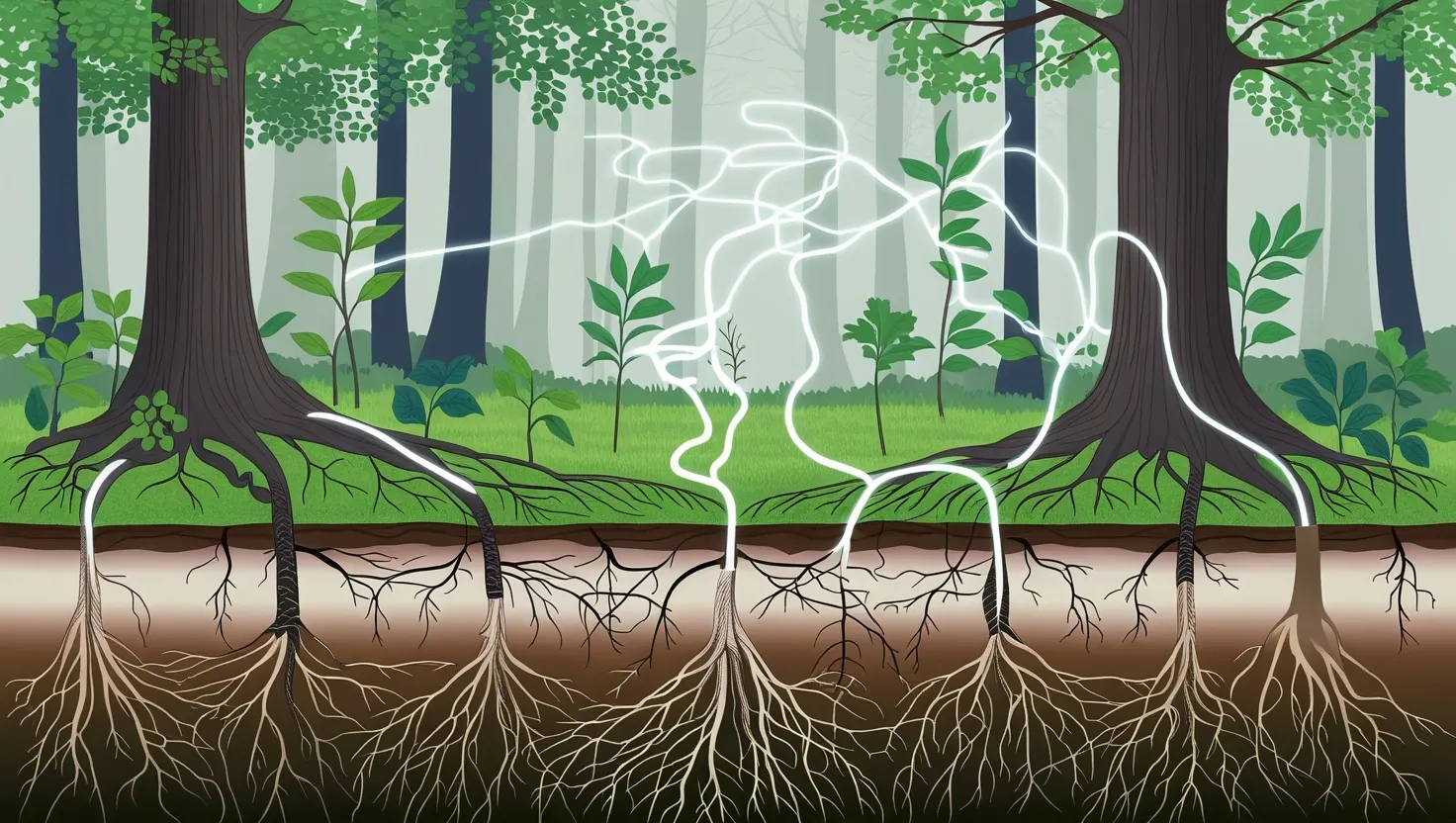Have you ever wondered what’s really going on beneath the surface of a quiet forest or the roots of your backyard tomato plant? You might walk by a patch of wildflowers, assuming there’s nothing more complex than photosynthesis happening, but you’d be surprised. The plant world hums with coded messages, alerts, warnings—even what could be called memories.
Dig a bit deeper, and you find a realm where plants aren’t just passive backdrops to animal drama. They’re actively communicating—sometimes in ways we’re only just starting to detect. This is not the stuff of fairy tales or pseudoscience. It’s science at its strangest, and I think it’s time we look at plant life with new eyes.
Let’s start with the idea that plants have their own version of an electrical nervous system. When an insect chews into a leaf, that damage isn’t just a wound—it triggers a swift electrical signal within the plant. This signal can jump from cell to cell, sending a wave of calcium ions racing through the plant’s tissues. Imagine a plant’s own version of nerve impulses, carrying distress signals not just locally but to distant leaves. Now, what’s especially fascinating is that this electric warning can spill over—neighboring plants pick up on these cues, too, prepping their defenses before the invader ever reaches them.
“Look deep into nature, and then you will understand everything better.” — Albert Einstein
We’re only beginning to scratch the surface of how plants coordinate their chemical defenses using these electrical waves. Some plant species seem to go even further, warning others of the same kind nearby—sometimes using entirely unknown pathways, possibly even combining electric and chemical signals. Most of us think of roots as silent supporters, but let’s consider another reality.
Below the ground, a network of fungi forms intricate connections among plant roots. Picture a vast web, a living infrastructure connecting hundreds of trees or grasses for kilometers. Through these threads—known as mycorrhizal fungi—plants trade nutrients, ferry chemical alerts, and even exchange carbon. It’s as if the forest floor has its own information highway. What’s wild is that some trees, known as “mother trees,” appear to help their kin by sending sugars and nutrients through these fungal pipelines. Sometimes, even unrelated species join the circuit, receiving or giving according to need or opportunity.
This hidden traffic reshapes how we think about competition in nature. Instead of fierce solitary battles, forests may operate as massive cooperative societies, built on sharing and negotiation through fungal intermediaries. I find myself asking, how much of a plant’s fate depends on who it’s connected to? Are some species playing favorites, or is the system more open-handed than we imagine?
“Those who contemplate the beauty of the earth find reserves of strength that will endure as long as life lasts.” — Rachel Carson
Communication above ground gets a little more dramatic. When a plant suffers a wound—a caterpillar bite, a grazing animal—its response is to send out a burst of volatile organic compounds. These are fragrant chemicals, often undetectable by human noses, but other plants sense them like an early warning siren. Neighboring plants, often just downwind, ramp up their own chemical defense systems before the threat even arrives. There are cases where the specific cocktail of volatiles can identify the attacking species, allowing others to tailor their responses.
Not all signals are warnings. Some airborne messages are calls for help, designed to attract predatory insects that will hunt down the plant’s attacker. This three-way messaging—plant, pest, and predator—is a reminder that communication in nature is rarely just a two-way street. I find it remarkable how a simple wildflower wields such strategic power in its miniature wars.
If we shift our gaze beneath the soil again, we see another layer of messaging. Roots don’t just soak up water and nutrients; they excrete a stunning array of chemicals that shape their environment. Some of these exudates suppress the growth of competing species, a sort of silent chemical warfare. Others draw in beneficial allies—bacteria, fungi, even tiny nematodes—that help defend against pests or improve nutrient uptake. This is a kind of partnership deal, sealed in the dark.
At times, root-secreted compounds are so precise that they attract only those microbes equipped to unlock specific plant nutrients, almost like an exclusive club. It’s not all survival, though; roots also use chemical cues to avoid overcrowding with siblings, giving everyone some breathing room. In dense forests or grasslands, such systems help maintain diversity and harmony without a central referee.
“Nature does not hurry, yet everything is accomplished.” — Lao Tzu
Now here’s where things get really strange. Plants may not make a noise in the way we do, but there’s growing evidence they perceive sound. Imagine a seedling picking up the vibration of water trickling underground, directing its roots toward the source before it even tastes moisture. Or a plant detecting the subtle sound of a caterpillar crunching nearby, then turning on its defensive chemistry in anticipation of attack.
Some research suggests that plants distinguish between types of vibrations, effectively “listening” to their world. How does a plant cell sense a sound vibration and translate it into a biological response? The mechanics are still being unraveled, but the idea is pushing the boundaries of what we thought plants could sense.
But what about memory? This is perhaps the most mind-bending concept of all. Certain plants seem to retain “memories” of environmental stress—droughts, chilling cold, even wounds. These memories don’t live in brains, but rather in chemical markers attached to their DNA. When a parent plant survives a tough season, it can pass along these epigenetic changes to its offspring, effectively priming the next generation to deal with similar hardships. In some cases, this preparation can last through several generations, a kind of family wisdom coded not in stories but in molecules.
So what are the broader implications of these discoveries? For agriculture, understanding plant communication could mean new ways to breed crops that warn each other about pests or environmental threats, reducing the need for chemical interventions. Farmers could even exploit fungal networks to engineer more resilient, cooperative fields. If plants can “hear,” could we influence their growth or stress responses simply by playing specific sounds?
“Between every two pines is a doorway to a new world.” — John Muir
On a grander scale, these findings challenge how we see the living world. The traditional divide—animals as active, plants as passive—crumbles under the weight of this evidence. Plants are sensitive, responsive, and participatory in the dramas of their ecosystems.
What does it mean for our relationship with nature if plants are in constant dialogue with their environment, and with one another? Should our stewardship of landscapes—gardens, farms, wild spaces—take into account these hidden conversations?
If you’ve read this far, I’d encourage you to consider—what else don’t we see happening in the “quiet” corners of nature? The more we learn about plants, the more it seems that life communicates on all levels. The next time you wander through a garden or a forest, try pausing for a moment. Ask yourself: What messages are being sent right under my feet? What networks am I wholly unaware of, yet stepping across?
One thing is certain: every silence in the plant world is full of dialogue—we’re only just learning how to eavesdrop.






